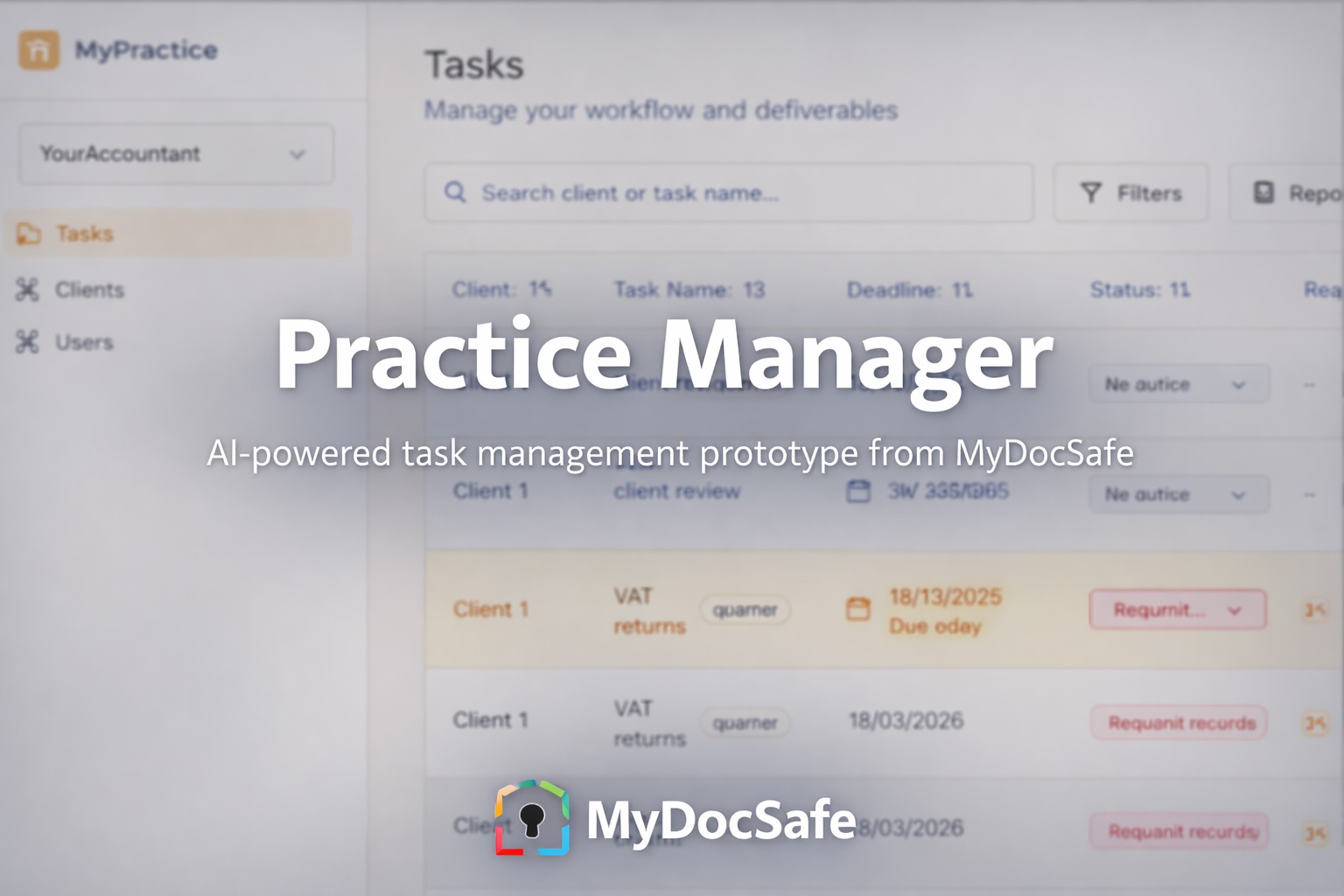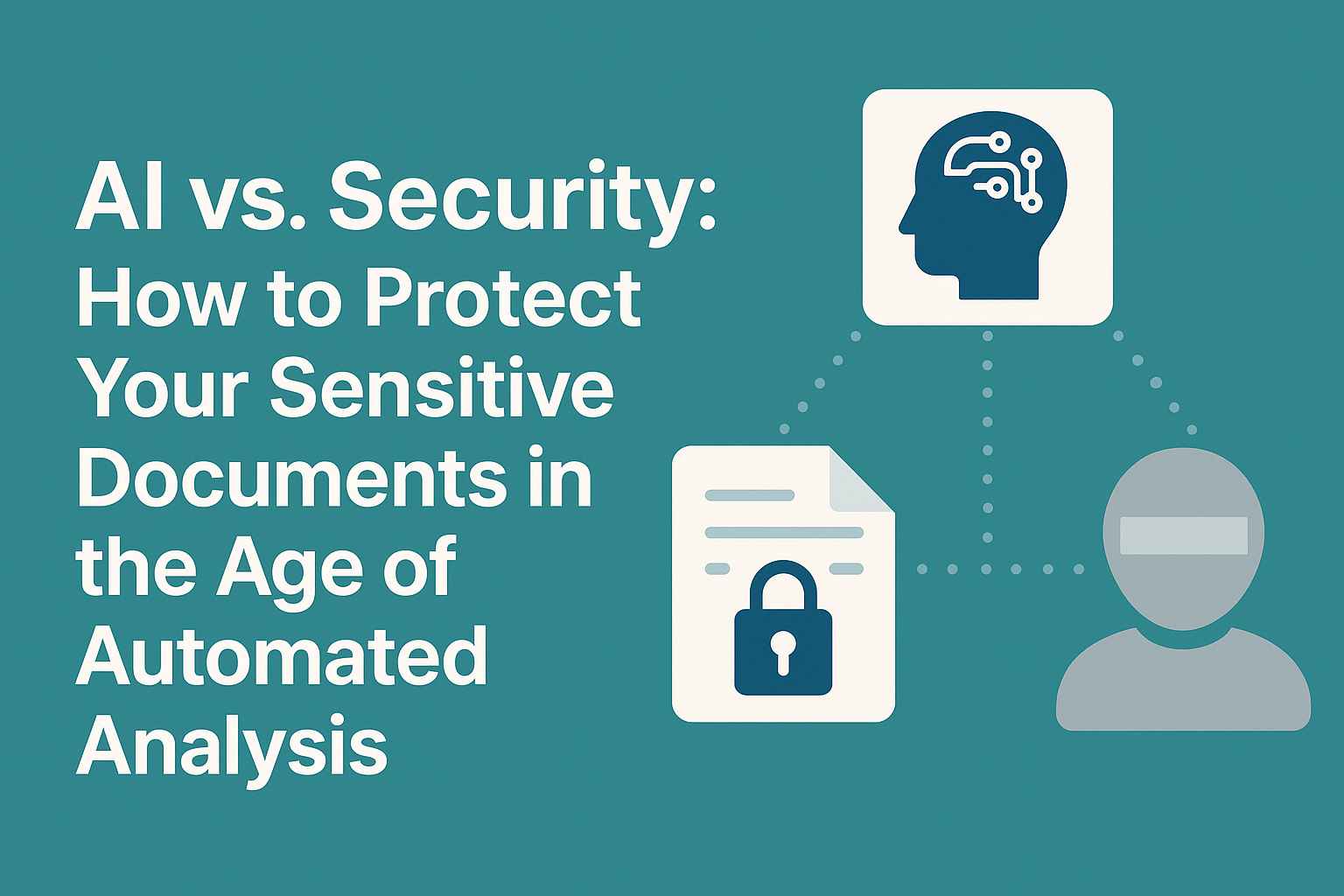E-Signature Software
Streamline deals, verifications and approvals with the only electronic signature software you will need.
Our Electronic Signature Software at a Glance
Using our electronic signature app, simply upload a file, add a signature box and send. The platform will forward it for signing, notify you once it’s done and automatically store the document.
Engage new clients, renew contracts, request approval and get verifiable confirmation with advanced e-signatures Close deals faster with automatic notifications and reminders – and stop waiting around for those business-critical signatures
Save time. Save effort. Save money with MyDocSafe. Our e-signature software guarantees security while delivering a convenient and efficient experience for your clients and your team.
Are you fed up paying more than you need to? From Docusign through AdobeSign to Signable - compare the pricing and if they can beat us - let us know.

Reduce your admin time with quicker, simpler electronic signature software
- Streamline your workflow by sending documents for signing directly from Microsoft Outlook or any major web browser. Then automate reminders to ensure no document sits unread, waiting to be signed – and save your team the hassle of chasing. And to check the status of any document on-the-go, just login to the mobile app.
- You can even integrate payments, contracts and approvals into your document signing process – quickly and simply – to keep your business running smoothly.

And save your customers’ time with easier, faster electronic signing software.
- Sign any document in seconds without the need to login. Just click to open and click to sign. MyDocSafe gives you several different advanced signature options, each legally-binding and fully verifiable.
- Your customers simply sign, we handle all the technical verification details. Users can then download a copy directly to their device, or claim their free MyDocSafe storage with encryption protocols for extra security.

Speed up regular processes with automatic customisation
- Cut unnecessary paperwork with MyDocSafe’s powerful mail-merge capability, perfect for renewing contracts, terms of business agreements or any other template-based documents
- Simply select the relevant fields for customisation and merge each document with bespoke, personal data for each recipient
- Send and repeat to large groups of people, where multiple individual signatures are required, without the extra admin time

Faster business to increase your revenue
- No waiting around to close deals – make electronic signing a seamless, automatic part of your proposal process
- No lost time sharing documents for multi-party signing – send simultaneously or auto distribute to the next recipient in a round robin contract

Save money and boost security with MyDocSafe
- MyDocSafe is the only electronic signing software you need to reduce physical costs associated with securing signatures and improve the productivity of all departments in your business.
- All with best-in-class security as standard. Plus you can add extra security features if required, including two-factor authentication with SMS codes and escrowing private encryption keys with a reputable third party.
- Any user can verify the authenticity of an electronic signature here.
- If required, procure qualified electronic signatures from a range of European trust services providers

If you are new to electronic signatures:
Electronic signatures, often termed as eSignatures, have revolutionised the way we authenticate documents and formalise agreements. As we move swiftly into 2024, understanding the nuances of electronic signatures becomes paramount for individuals and businesses alike. This very short guide aims to demystify the concept, discussing everything from their fundamental role to the legal standing and the latest technology driving their adoption. Whether you’re a freelancer, a small business owner, or part of a large corporation, this note will equip you with the knowledge to leverage electronic signatures for efficiency, security, and compliance.
Understanding Electronic Signatures
At its core, an electronic signature is a digital form of signing documents, offering a convenient and secure alternative to traditional pen-and-paper methods. They can range from a simple scanned image of a handwritten signature to more sophisticated versions that include verifiable data about the signer and the signing process.
The Role and Purpose of Electronic Signatures
Electronic signatures serve the crucial role of validating documents, contracts, and agreements in a digital format. They ensure that the document has been reviewed and agreed upon by the parties involved, providing a layer of authenticity and intent.
Acceptable Formats of Electronic Signatures
The formats of electronic signatures can vary widely, from typed names and digital images to cryptographic-based signatures. The choice of format often depends on the specific requirements of the document or regulation in question.
Advantages of Using Electronic Signatures
The advantages are manifold. They offer a high level of convenience, allowing documents to be signed from anywhere in the world. They also enhance security, with advanced encryption and authentication methods. Moreover, electronic signatures can significantly reduce the carbon footprint associated with paper-based processes.
Key Users of Electronic Signatures
Electronic signatures are utilised across a range of sectors including finance, healthcare, government, and legal industries. They’re instrumental for anyone looking to streamline administrative processes and embrace digital transformation.
Legal Standing of eSignatures
Globally, many countries have enacted laws and regulations recognizing the legal validity of electronic signatures, provided they meet specific requirements. For instance, the ESIGN Act in the United States and the eIDAS regulation in the European Union establish a legal framework for eSignatures.
Key Features to Consider in Electronic Signature Solutions
When selecting an electronic signature solution, critical features to look for include ease of use, security measures, integration capabilities, compliance with relevant laws, and the ability to verify the identity of the signatories.
How to Drastically Reduce Time Spent on Contracts
Electronic signatures can dramatically decrease the time spent on executing contracts. By enabling instant document sharing and signing, businesses can eliminate the delays associated with manual handling and postal services.
Comparison: eSigning Software Vs. Contract Management Software for 2024
When comparing electronic signing software to contract management software, it’s essential to recognise that while both facilitate the management and signing of contracts, contract management software offers broader functionalities. These include contract creation, tracking, and lifecycle management. Depending on your organization’s needs, you may benefit from using one or both.
In conclusion, as we embrace the digital age, electronic signatures stand out as a pivotal technology for secure, efficient, and eco-friendly document management. They not only reduce the turnaround time for agreements but also uphold stringent security standards, making them a smart choice for future-forward businesses.
Join us to unlock the full potential of electronic signatures and revolutionise the way you do business.
The simple, secure, streamlined electronic signature softwareLearn more
Start your free trial today
With an intuitive and straightforward user interface, guaranteed protection, automatic customisation and advanced e-signature features, your clients and your organisation can enjoy secure, convenient and efficient approvals, verifications and transactions.
Try our electronic signature software to understand why MyDocSafe is the only document management partner you will ever need. Sign up for your free trial today.
Yes, when implemented with proper encryption and authentication technologies, they are highly secure. We offer various types of security measures: from document passwords, SMS codes, Knowledge-Based Authentication, to portal logins.
While electronic signatures are acceptable for most document types, some legal documents may require a traditional signature or notarization.
Ensuring compliance with the laws and regulations applicable in your jurisdiction is crucial. This may involve using a compliant eSignature solution and verifying the identity of all parties involved. For that reason we also offer Qualified Electronic Signatures which are popular in certain type of transactions in the European Union, as well as ID verification services that can be used to onboard your clients before you offer them a contract to sign.
Quite a few – self signing; multiple party signing; multiple documents sent as a workflow; document broadcasting (everyone signs a separate copy); embedding esign into an onboarding workflow or a quote; filling a questionnaire and then signing a PDF version of it (so that you get both a signed document and exportable data)
Each document has a MyDocSafe signing certificate page appended to it which documents the document journey for each signer including IP addresses, time stamps, mobile phones used, email addresses as well as document fingerprints, QR codes and a scanned copy of the first page. Signatures are captured on specific places in the document including various types of data types.

